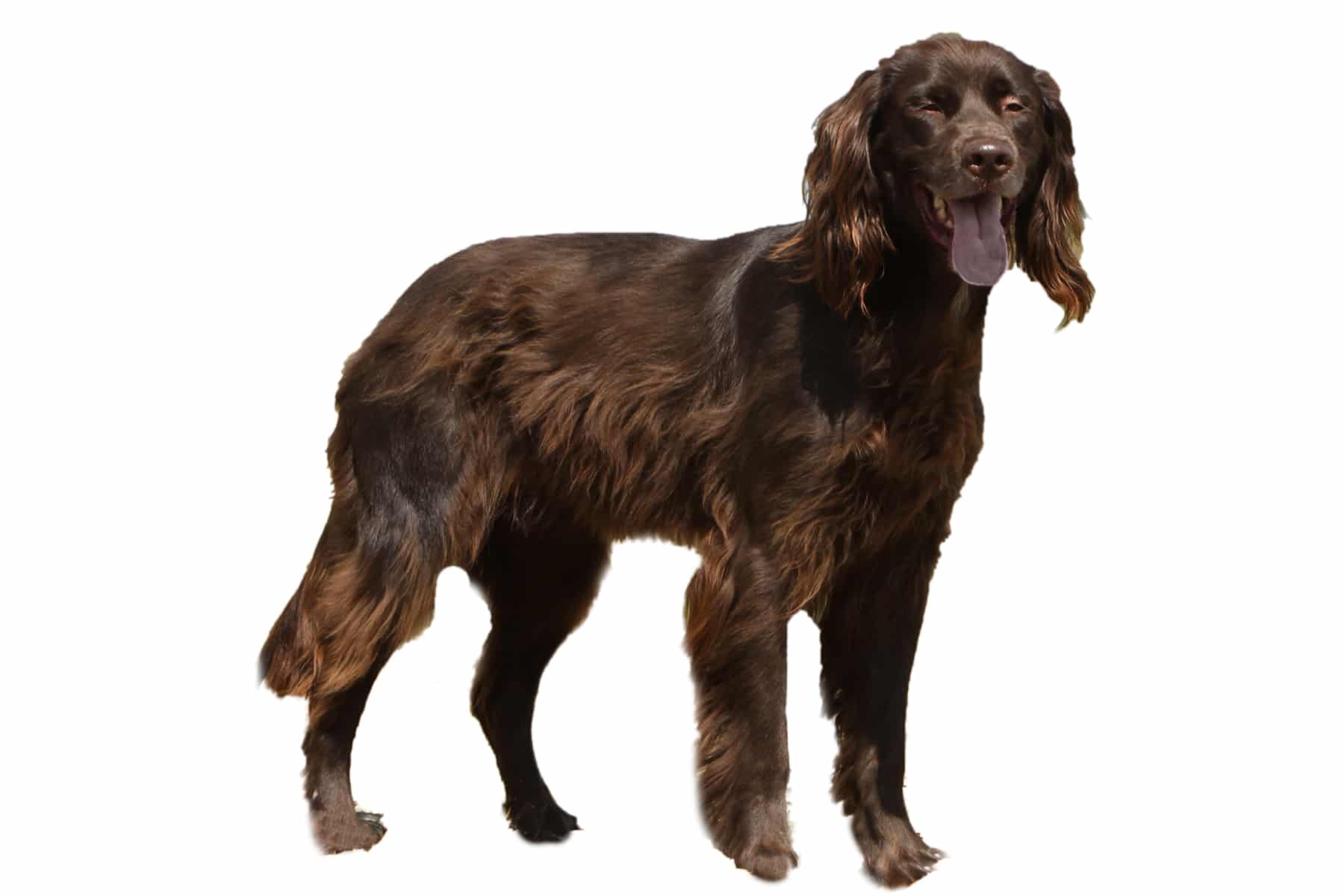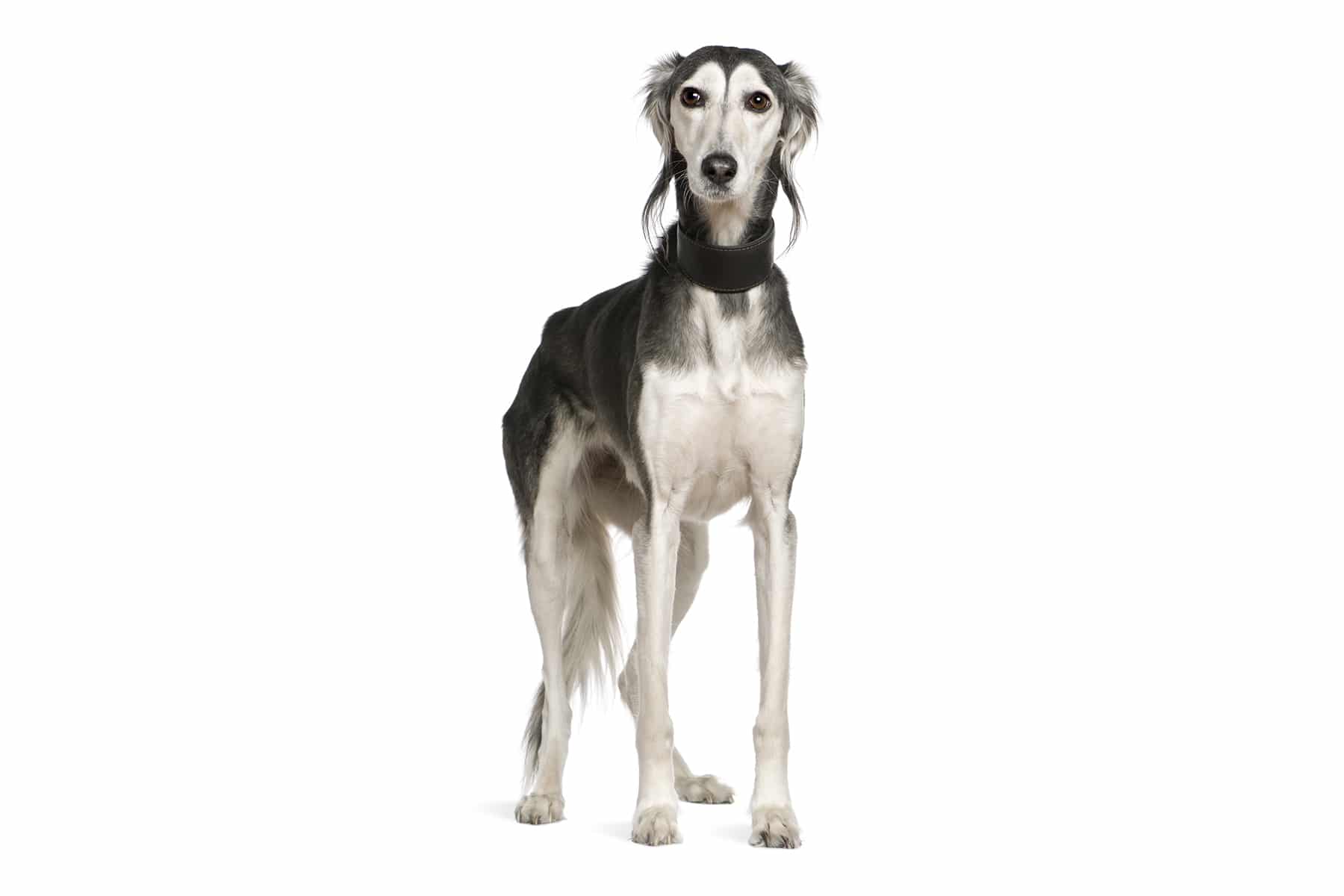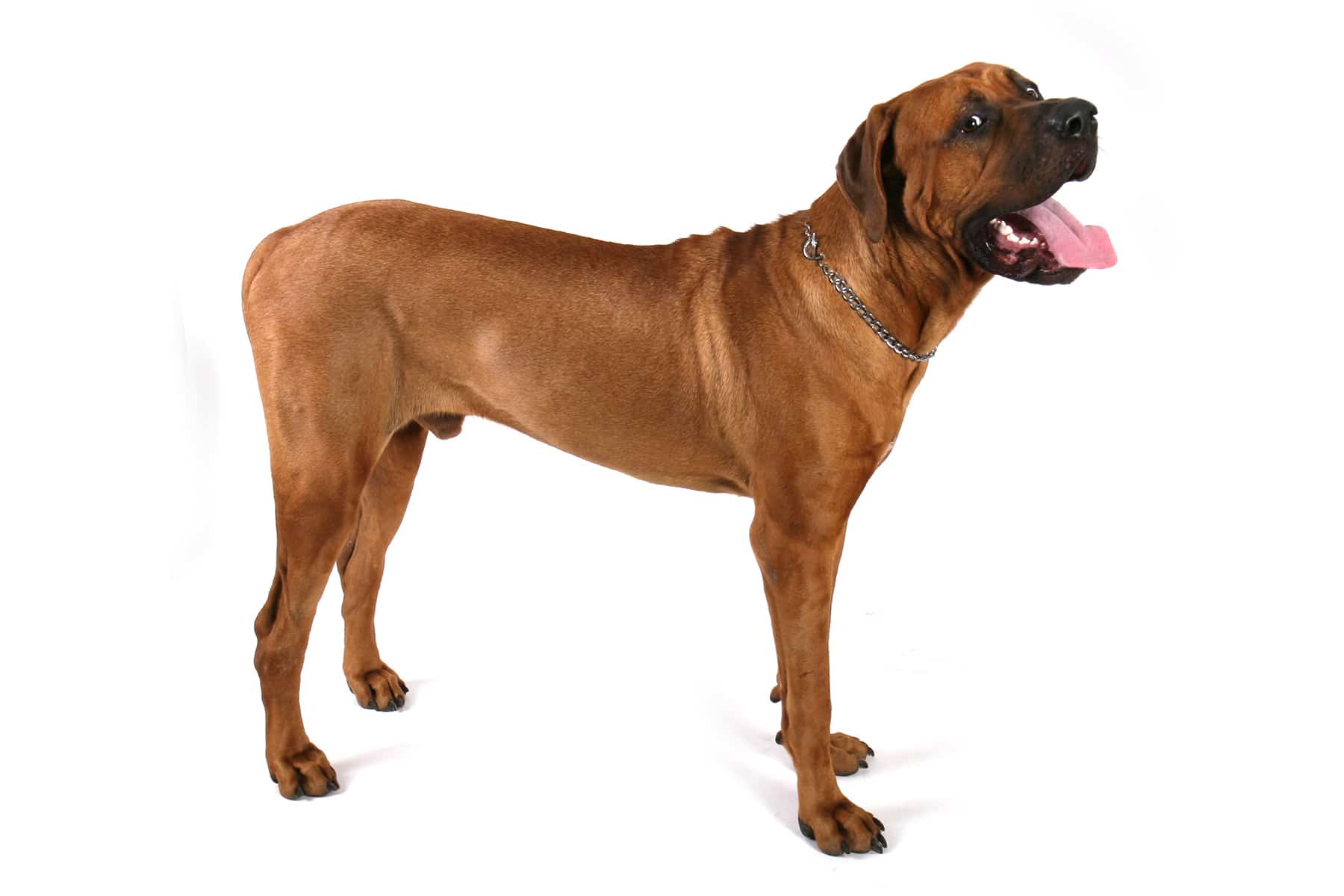Xoloitzcuintle
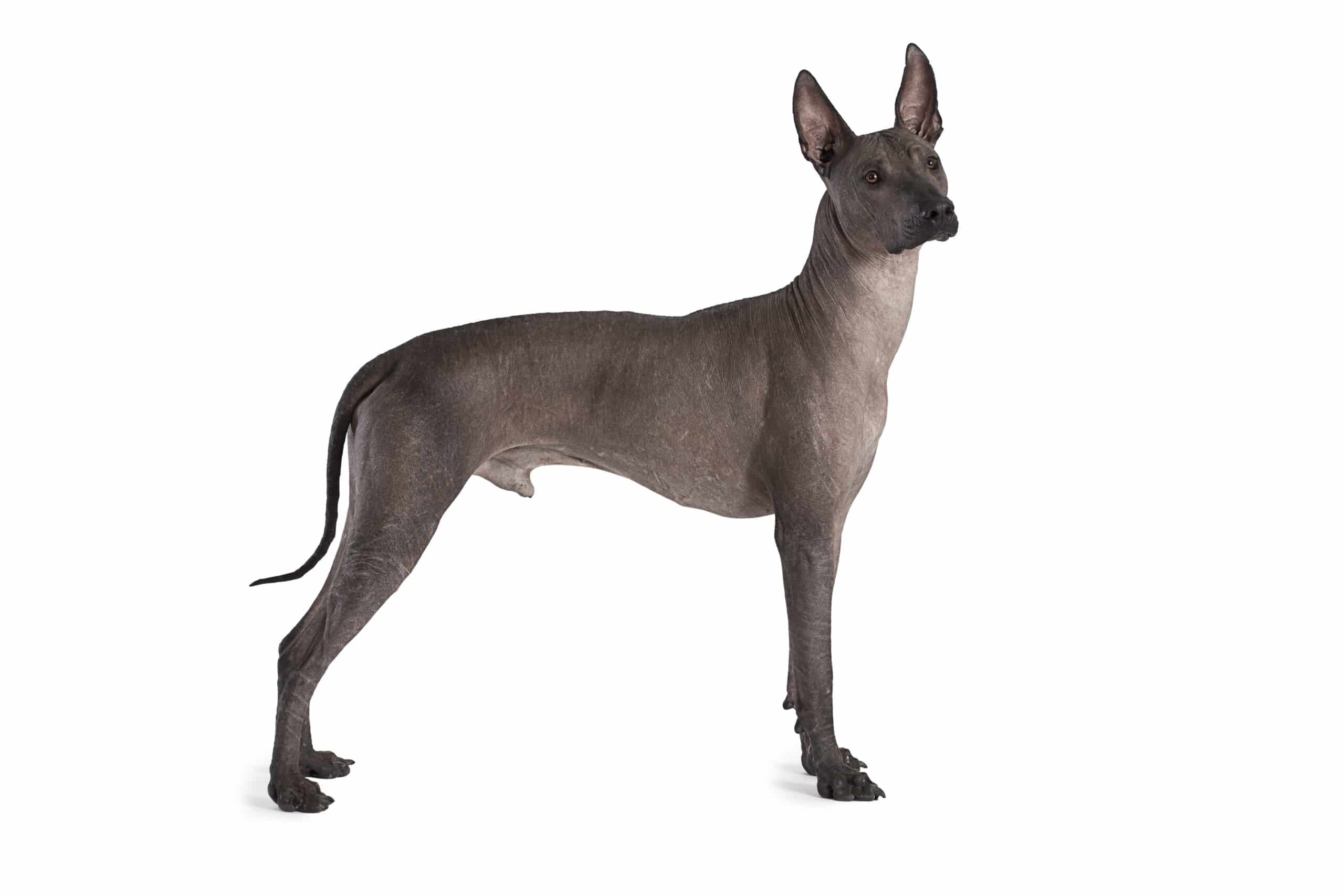
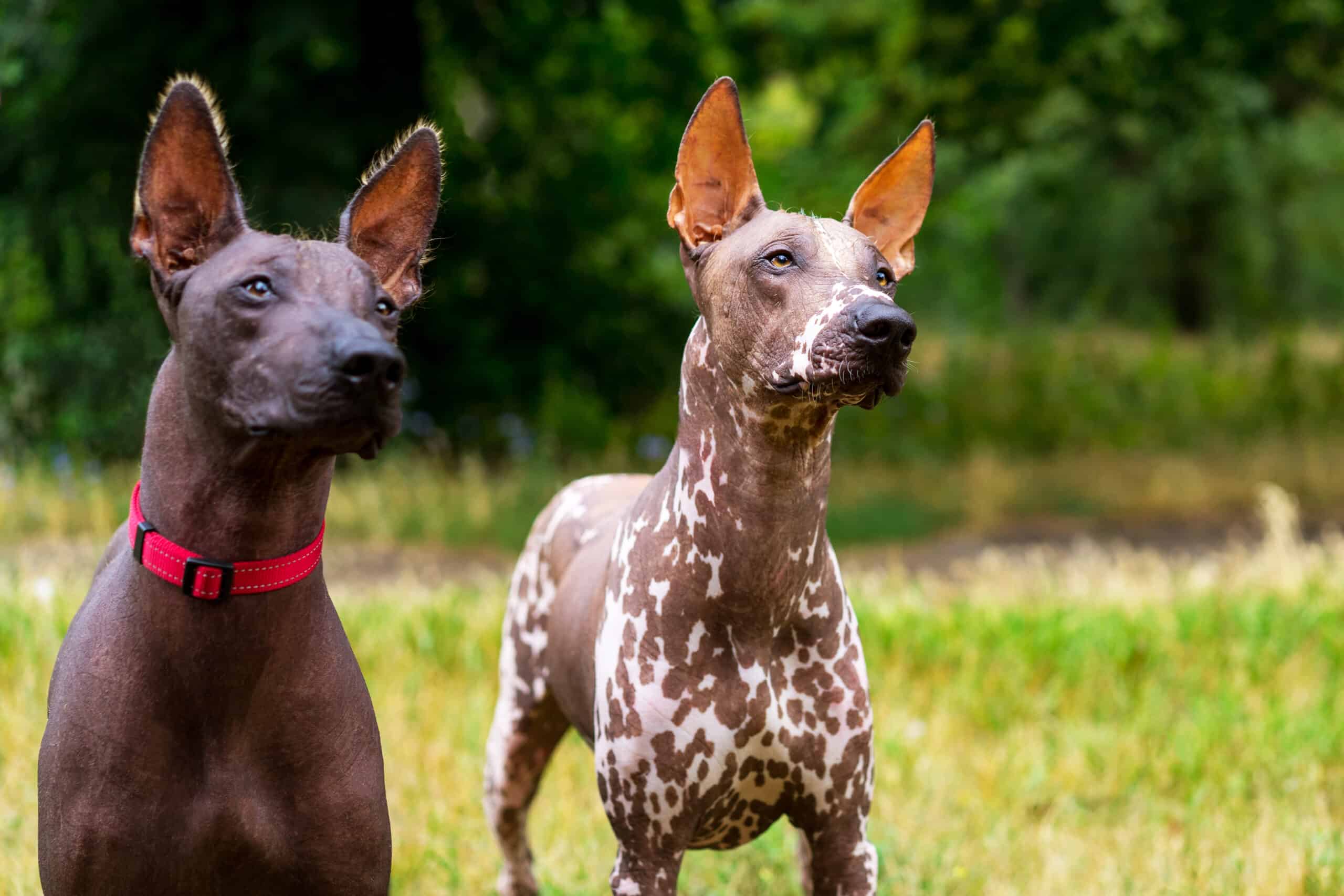
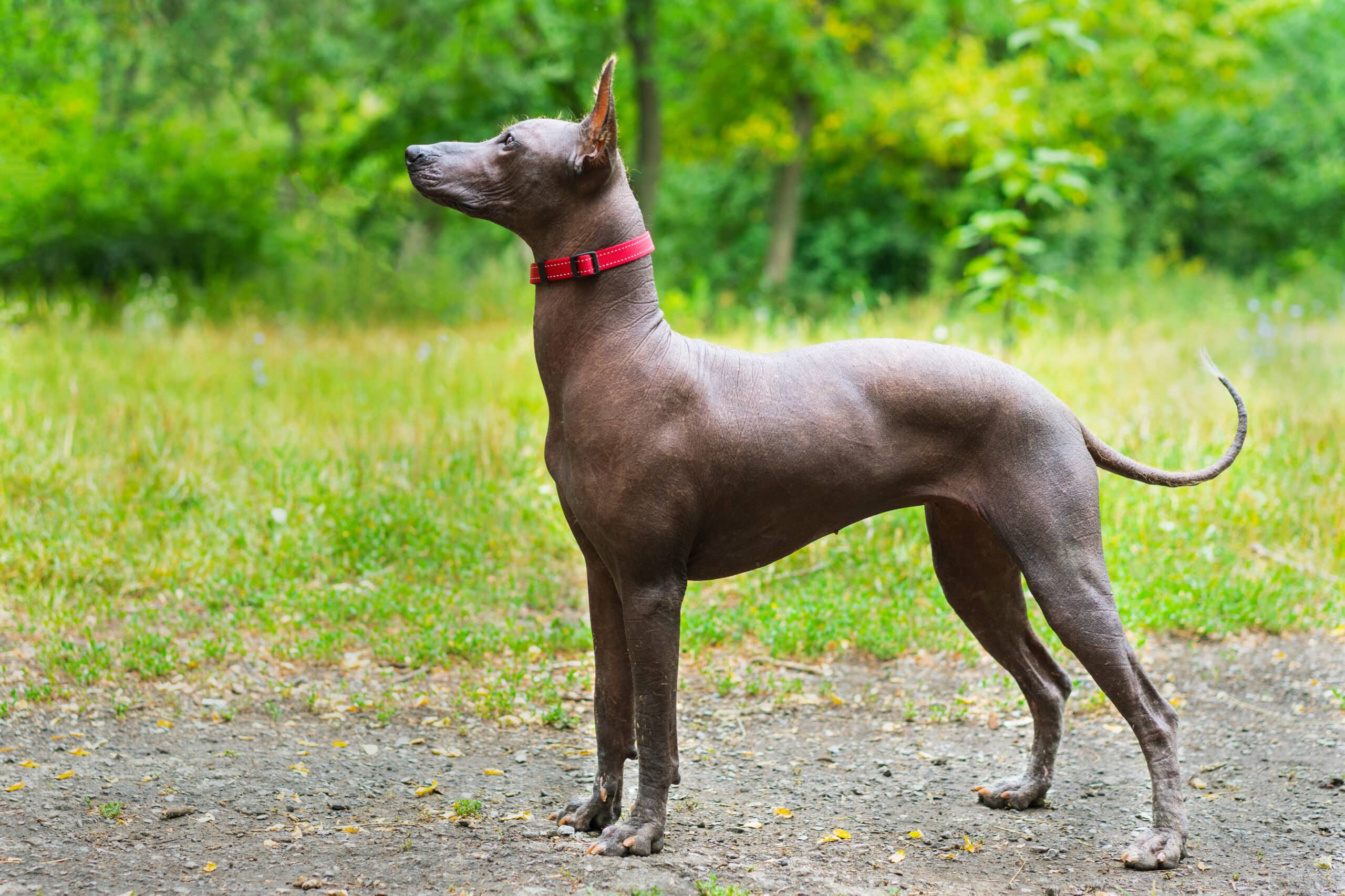
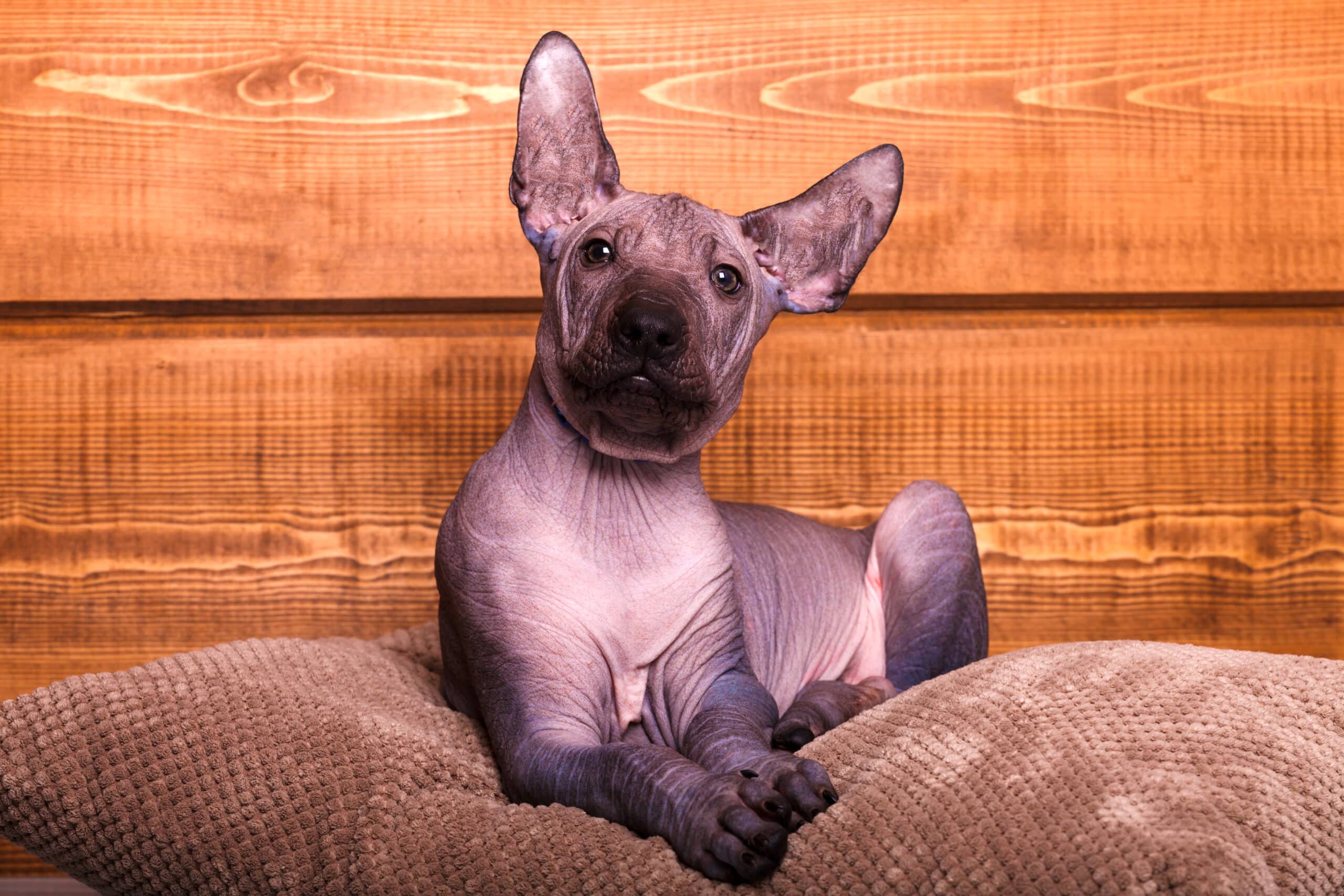
Temperament:
The Xoloitzcuintle - also known as the Mexican Hairless Dog or Xolo for short - is truly exotic in Europe. It owes its name naked dog to its lack of fur. If you are looking for a special family dog and are allergic to dog hair, this breed could be just right for you.
Characteristics
The Xoloitzcuintle is an FCI-recognized breed that falls into the category of "original type" dogs. This unique dog breed has been bred for 3500 years.
The Xoloitzcuintle is bred in three different sizes. A distinction is made between standard (46cm - 60cm), medium (36cm - 45cm) and miniature (25cm - 35cm). The Xoloitzcuintle is also available with fur, but with the breed-specific genetic defect.
The Xoloitzcuintle with fur has dense and short hair all over its body. Dogs with fur have the same colors as their hairless relatives. Coat and skin are black, slate gray, liver or bronze. The Xoloitzcuintle can also have white or coffee-brown patches. For breeding purposes, naked and coated dogs of this breed are crossed.
The Xoloitzcuintle is muscular and has a relatively broad chest. The legs and tail of this athletic dog are long and sinewy. It often lacks teeth or has no teeth at all. The reason for this is a genetic defect, which is also responsible for the lack of coat. So if you want a dog of this breed, you should bear in mind that it could have dental problems.
The pointed bat ears of the Xoloitzcuintle are striking. The almond-shaped eyes can be any color from yellow to black. The animals' skin is leathery and protects them from the cold and wet. They are therefore no more sensitive than short-haired dogs. However, you should protect them from the sun, as they can easily get sunburnt. Light-colored dogs and all light-colored areas on the skin are particularly at risk.
The Xoloitzcuintle is a sporty dog. He is easy to train and a pleasant, friendly and affectionate companion and family dog. He is also an attentive and alert dog.
You should encourage your Xoloitzcuintle through regular play. Walks and exercise in general are very important. The lively dog is cheerful and easily excited. A Xoloitzcuintle that is exercised regularly is a pleasant and calm house dog. It is well suited to dog sports such as agility.
The Xoloitzcuintle without fur is particularly suitable for allergy sufferers. Of course, you should first test whether you react to the dog and the breed. Only when an allergy can be ruled out should you bring a dog into your home. For example, ask a breeder if you can visit them once. This way you will get to know the character of the Xoloitzcuintle better.
Coat care:
Shedding:
Energy level:
Trainability:
Children suitable:
The right food
When choosing food, make sure that it contains high-quality ingredients, is balanced and meets your dog's requirements. Age, size or weight, activity and health status play an important role. You should follow the manufacturer's recommendations for the amount of food.
Treats should only be fed in moderation and deducted from the basic diet to avoid obesity.
Puppies can be fed 4-6 times a day. The number of meals should be gradually reduced to 2 per day until the dog is fully grown. A rest period should be observed after meals.
Fresh drinking water should be available at all times.
Misaligned or missing teeth are a health problem for the Xolo. Therefore, check their teeth regularly. Make sure that your dog can chew its food well.
If your dog has no teeth, you should give him wet food.
Although this breed can have dental problems, it has a need to chew. You should therefore give your Xoloitzcuintle something to chew more often. Observe your dog and find out what he can chew well.
Beef skin treats are suitable for most dogs. If your dog has severe dental problems, you can also give him soft chew toys. This will allow him to satisfy his natural need to chew without putting too much strain on his teeth.
Health & Care
The Xoloitzcuintle, which is generally quite easy to care for, has a few special features that vary depending on the dog's coat.
Hairy specimens have a short, dense coat that needs to be brushed regularly. Like all dogs, the Xoloitzcuintle should only be bathed very rarely. It is important to use only dog shampoo.
Some hairless dogs tend to have dry skin, which is uncomfortable and can lead to injuries. You can rub some baby oil on your dog, which can be a good protection, especially during the heating season. Make sure you use an organic baby oil without additives.
If you have a hairless Xoloitzcuintle, its skin must also be protected from the elements. As with humans, there is a risk of sunburn on bare skin. Especially on very sunny days, your dog should be covered with a thin dog coat. Make sure that the coat is only made of thin cotton. On very hot days, your dog should stay in the shade. Black dogs in particular are very sensitive to heat.
Although it has no fur, the Xoloitzcuintle is not very sensitive to heat. If it is very cold, your Xoloitzcuintle should still be protected from hypothermia. This also applies to hairy specimens. If you take your dog for a walk in winter, he should wear a warm coat. Especially if the dog is walking on a lead, it can get cold quickly. The more the dog can walk, the better its body will keep it warm.
In addition to daily grooming, you should check your dog's teeth regularly. Brushing their teeth can be helpful. This requires a little patience, as most dogs don't like having their teeth brushed. Get your dog used to brushing its teeth as a puppy and use special dog toothbrushes and toothpaste. Products for humans are not suitable.
You should always have a lot of patience and time when grooming your dog. When your dog is calm, reward him with food and good coaxing.
Bare skin has one advantage: the Xoloitzcuintle is less susceptible to parasites. The thick skin makes it more difficult for parasites to penetrate.
Suitable accessories
You will need a suitable collar and lead for your Xoloitzcuintle. The collar must fit well as there is no protective fur. A padded collar can be helpful. Especially in the puppy phase, the dog should be kept on a harness. This prevents injuries if he pulls on the lead.
Of course, your Xoloitzcuintle needs at least two bowls. It should also have a fixed place to sleep. A padded basket or dog cushion is suitable for this. You can also put a blanket on the sofa for your dog. However, especially in families, the dog should always have an undisturbed place to retreat to.
Your Xoloitzcuintle probably needs protective clothing. Always make sure that the clothing fits well. Incorrect clothing constricts the dog and can chafe the skin. In general, it is a good sign if your dog likes to run and play in his clothes.
Your dog also needs claw clippers, a toothbrush and toothpaste for dogs, a transport box for transportation in the car and a first aid kit. It's best to ask your vet what should be in the first aid kit.
Your dog will enjoy toys that keep him physically and mentally occupied.
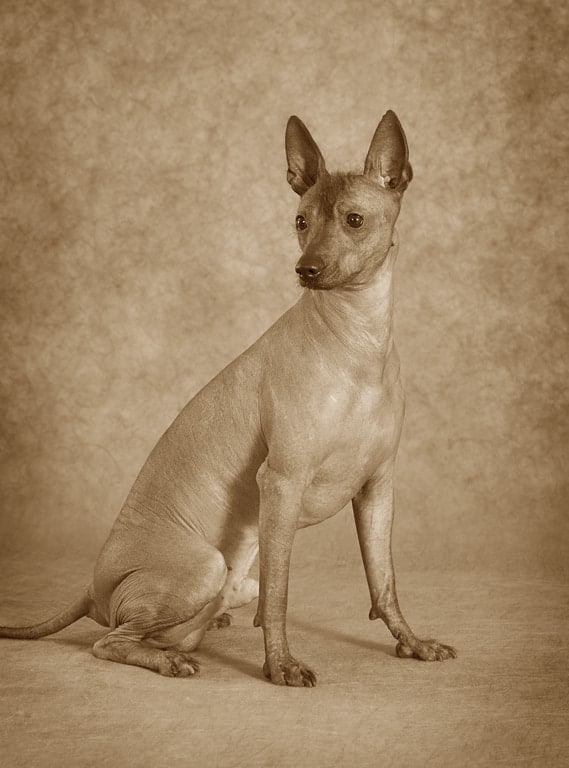
Origin & History
The Xoloitzcuintle is one of the oldest dog breeds. It has its origins in Mexico. To this day, the Xoloitzcuintle is kept by the Indians in the Andes. There are even depictions of the Xoloitzcuintle dating back to around 1700 BC. The clay figures look very similar to today's specimens.
The name Xoloitzcuintle means "dog of the god Xolotl". The dogs of the Atztecs were very valuable and respected. For many centuries, they were kept by the Atztecs and bred for their appearance.
In the past, the Xoloitzcuintle probably had several functions. However, it was never a workhorse. It accompanied the sick and warmed them. Sometimes it was also sacrificed. Or slaughtered and eaten. They were considered a delicacy back then.
Many mummies of this breed have also been found, which were probably made to accompany the deceased into the afterlife. This shows how important dogs were as human companions in earlier times.
In later centuries, the Xoloitzcuintle was crossed with European dogs. This is how the Chinese naked dog came into being.
The breeding of the Xoloitzcuintle is sometimes referred to as torture breeding. If you want to have a Xoloitzcuintle, you should find out about the genetics of these dogs. Among other things, the genetic defect in these dogs means that some of them die in the womb.
Today's Xoloitzcuintle is largely descended from pre-Columbian dogs. Only a small part of the genetic material is European. After the conquest of South America by the Europeans, the Xoloitzcuintle was almost wiped out. It was almost extinct for many centuries.
The Xoloitzcuintle has only been known in Europe since the 1950s. Since then, there have also been breeders who want to preserve the breed. The breed was finally recognized by the FCI in 1961.
